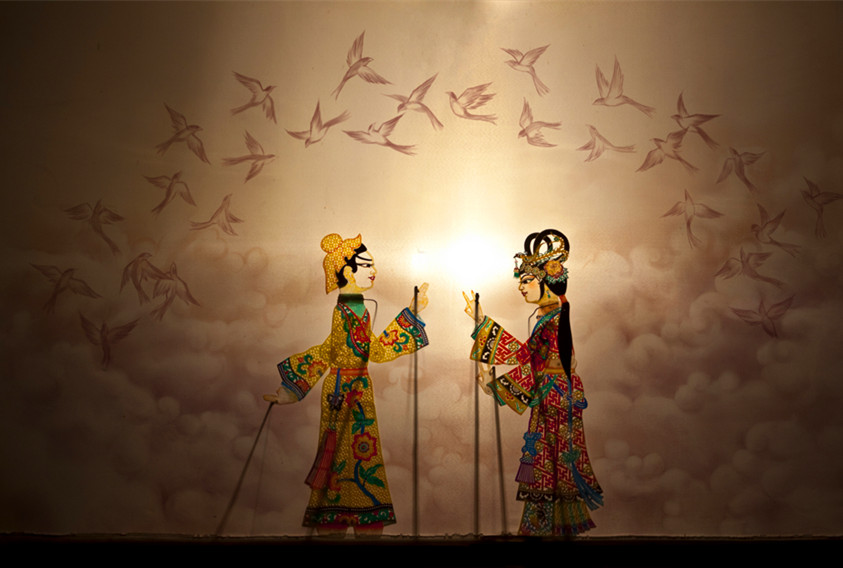皮影戏:摇曳在光影里的中国传统艺术

The shadow play is a typical traditional entertainment that has survived and thrived over the centuries. It is also one of the earliest arts introduced by China to the West.
Legend has it that more than 2,000 years ago, Emperor Wudi (156-87 BC) of the Western Han Dynasty was very depressed over the death of his favorite concubine (妃子). To help him get over his sadness, a minister made a puppet (木偶) out of cotton and silk in the likeness of the concubine and projected its shadow on a curtain for the emperor to see. The show brought the emperor some comfort. He somehow believed the shadow was his lover’s spirit. This is thought to be the beginning of the shadow play puppetry.
Puppet figures controlled by three to five artists using a transparent white cloth screen have now formed an artistic combination of opera, music, fine art and special craftsmanship. During performances, “actors” are held close to a white curtain with their colored shadows cast on it by a strong light from behind. Moved by guiding sticks, the puppets play roles along with music. Parts are played and sung by the puppet masters. The plays can be quite dramatic and, when it comes to fairy tales or kungfu stories, the “actors” may be made to ride on clouds or perform unusual feats (技艺), to the great enjoyment of the audience, especially children.
The popularity of shadow play is in some way attributed to the equipment being light and easy to carry, the small number of people needed for a performance, and the flexible requirements for performance venues. Shadow plays are mostly based on legends, folk tales and fables, although some are original. The shadow play is particularly adored by children because it feels more magical and mysterious than folk opera and it’s performed by ordinary players.